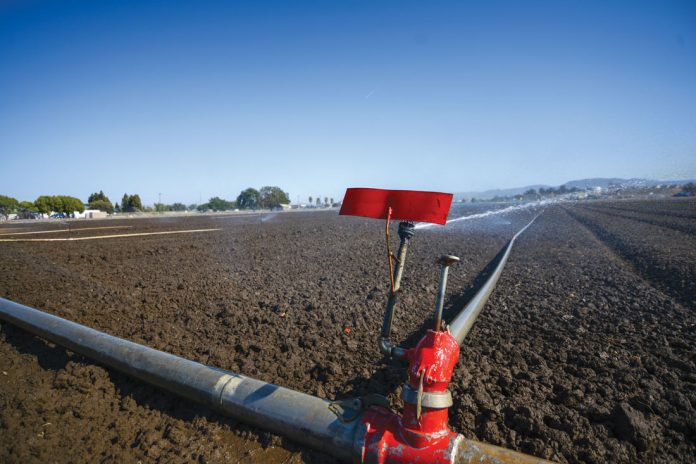Gov. Gavin Newsom declared a drought emergency in San Benito County on May 10, pointing to early warm temperatures that have hardened soils and depleted runoff water from the Sierra snowpack.
San Benito was one of 39 counties statewide that Newsom added to the emergency proclamation, in addition to two others announced in April.
“With the reality of climate change abundantly clear in California, we’re taking urgent action to address acute water supply shortfalls in northern and central California while also building our water resilience to safeguard communities in the decades ahead,” Newsom said. “We’re working with local officials and other partners to protect public health and safety and the environment, and call on all Californians to help meet this challenge by stepping up their efforts to save water.”
Lower-than-normal levels from the Sierra snowpack have resulted in historic reductions in the amount of water flowing to major reservoirs, especially in Klamath River, Sacramento-San Joaquin Delta and Tulare Lake Watershed counties, Newsom said.
According to Newsom’s office, warm temperatures in April and early May resulted in an accelerated rate of snow melt in the Sacramento, Feather and American River watersheds, which feed the major reservoirs of the state and federal water projects. In addition, much of the snowpack, sitting on very dry ground, seeped into the earth rather than flowing into rivers and streams and into these reservoirs.
Statewide, water supplies were reduced by more than 500,000 acre feet, enough to supply up to one million households with water for a year, according to Newsom. The drastic reduction in water supplies means these reservoirs are extremely low for water users, including farmers, and fish and wildlife in the counties the drought proclamation covers.
As of May 4, northern San Benito County was considered to be in Extreme Drought conditions, while the rest was classified as Severe Drought, according to the U.S. Drought Monitor.
The county had been in an “Abnormally Dry” state since January, the lowest level monitored by the U.S. Drought Monitor. However, drought conditions have progressively worsened since late March, with roughly 20 percent of San Benito County now considered in Extreme Drought, one level below the highest intensity of Exceptional.
San Benito County was last mired in Exceptional Drought from 2014-17, according to the data.
Newsom’s proclamation directs the State Water Board to consider modifying requirements for reservoir releases and diversion limitations to conserve water upstream later in the year to maintain water supply, improve water quality and protect cold water pools for salmon and steelhead.
It also directs state agencies to partner with local water suppliers to promote conservation through the Save Our Water campaign.
Assemblyman Robert Rivas (D-Hollister) praised Newsom’s decision, saying more than 90 percent of the state is considered in severe drought or worse.
“The governor made the right call today by expanding the drought state of emergency to 41 counties—and I anticipate that number will increase as we get closer to summer,” he said in a statement.
On April 19, the Hollister City Council declared May as Water Awareness Month in the city, encouraging residents and businesses to find ways to conserve water.
Shawn Novack, water conservation program manager for Water Resources Association of San Benito County (WRASBC), said the irrigation season is underway.
He encouraged residents to contact WRASBC for a free home water survey, where technicians inspect irrigation systems and provide recommendations.
The WRASBC has free water efficient landscape plans on its website under the “Rebates/Programs” link. According to Novack, these plans were drawn by a local landscape designer who highlights low water use plants that do well in San Benito County.
Rebates are also available to purchase new water-efficient toilets and landscape irrigation equipment. For information, visit wrasbc.org or call 831.637.4378.









